First Drive: Mercedes-Benz’s Sideways-Driving AVTR Concept Is as Otherworldly as It Looks
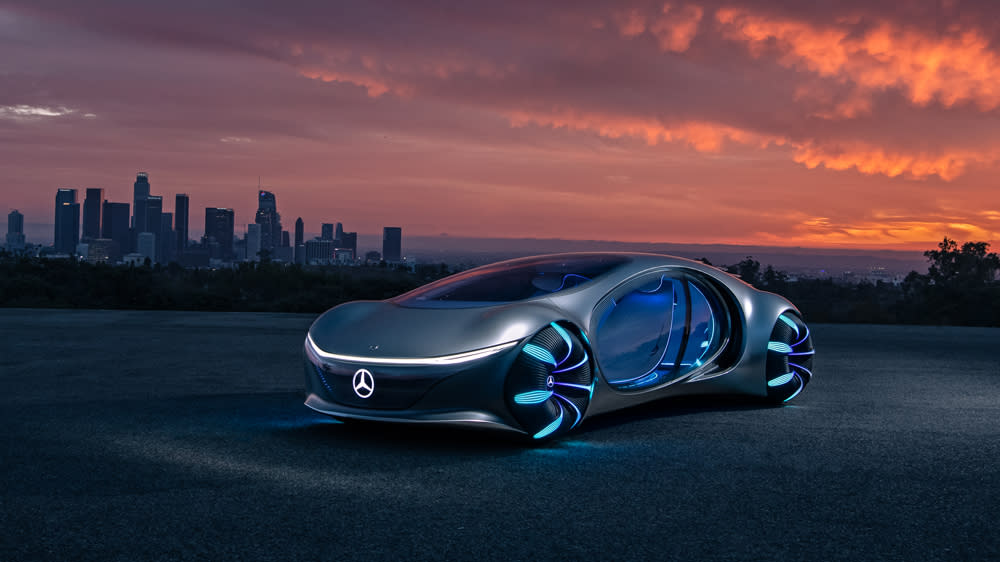
Hollywood tie-ins are, more often than not, flimsy cash grabs that link tentpole movies with mass-produced tchotchkes. In a move that rebels against the idea of disposable marketing, Mercedes-Benz collaborated with 20th Century Studios to link the new film Avatar: The Way of Water with the future of mobility. Rather than churning out Hot Wheels toys or an NFT that lives in a virtual world, Mercedes partnered the hard way: by building a drivable concept car, the Vision AVTR, that looks like science fiction brought to life.
The one-off is a wildly curvaceous, imaginatively illuminated cloud of a vehicle that neither looks out of place in—nor actually appears in—the heavily computer-generated film. Rather, the vehicle was conceived as an extension of Pandora, the fictitious cinematic world modeled as an Earth-like moon from Alpha Centauri.
More from Robb Report
This Epic New 217-Foot Trimaran Concept Was Inspired by . . . Noah's Ark
The Mercedes-Maybach S-Class Haute Voiture Is a High-Fashion Take on the Marque's Flagship
This Bonkers 252-Foot Hybrid Megayacht Concept Comes With Two Multi-Story Jellyfish Aquariums
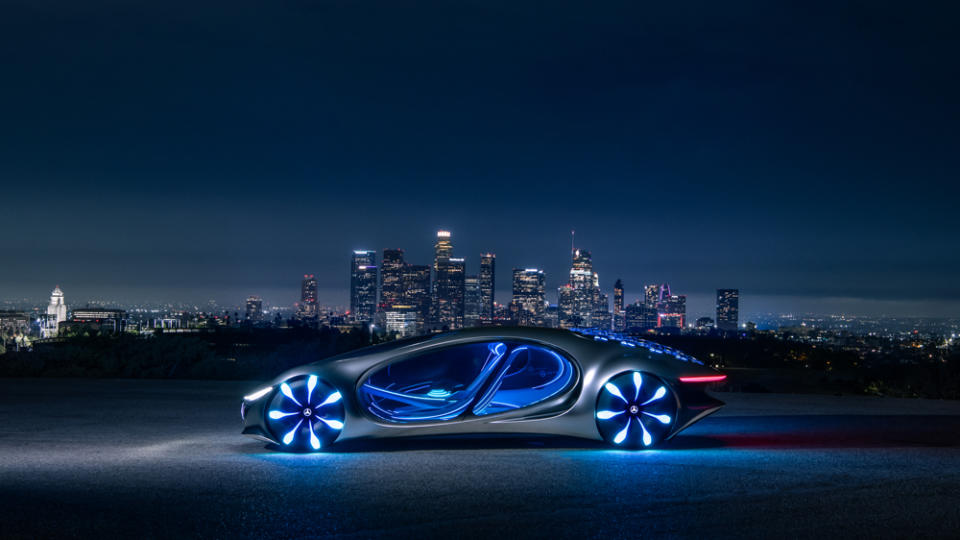
Executing a concept car from scratch meant aligning with the movie’s visual style and overall message—yet maintaining Mercedes-Benz’s 122-year-old brand identity. No small task. “Avatar, for us, is an IP [intellectual property], a brand,” explains producer Jon Landau. “I believe we have an ethos behind the movies we make and the stories we tell, and it was important for us to partner with a company we feel shares the same ethos. Mercedes’ vision of a sustainable future is what led to say, ‘hey, there might be something that can work here.’”
When asked whether the concept car was more influenced by the film or Mercedes-Benz, Landau says, “It is a hundred percent Mercedes, at the same time being a hundred percent Avatar in the ethos we share.” Cinematic ideology aside, Landau admits to being partial to the German marque, calling out some favorite personal cars he’s owned as three-pointed star models: a 280 SE 3.5 convertible, a 450 SL and a S600.
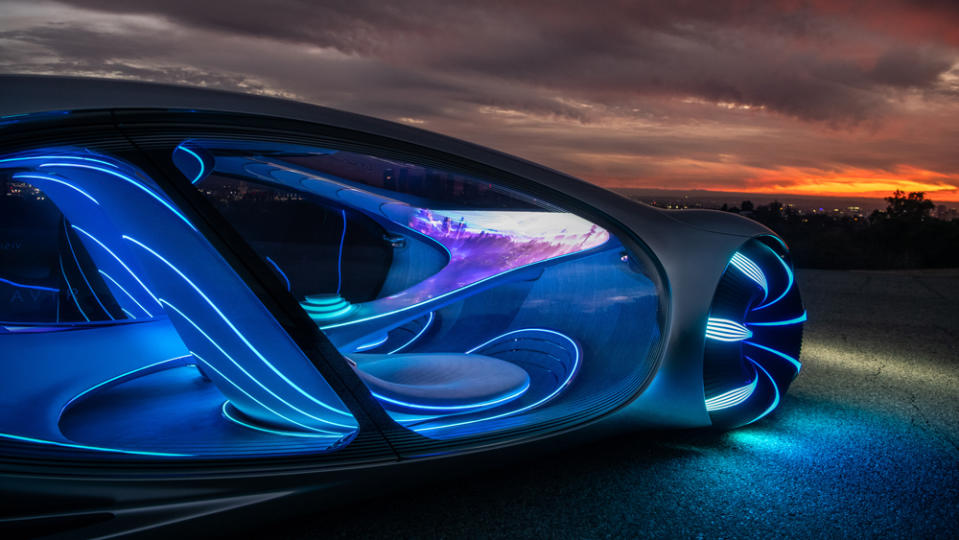
Landau says the creation of the Vision AVTR wasn’t a one-sided effort, rather more of a collaboration. “As Gorden [Gorden Wagener, chief design officer for Mercedes-Benz] knows, we don’t just turn things over,” says Landau of the creative direction. “We try and stay involved in that process and make sure we are stewards of the Avatar world.”
Wagener takes a high-level view of the union. “As a luxury company, you have to show responsibility. The luxury of the future will not be accepted without showing responsibility,” says Wagener. Yet, in context with the film’s fantasy themes, the car’s sinewy curves somehow gel. “I wouldn’t call it biodesign,” Wagener says, “but, in a way, it’s fluid, a harmonious thing that looks nice and goes through the wind efficiently. But beyond that, we turned the car into an organism.”
That organic form is encapsulated in a so-called one-bow design, a single gesture across the roofline that Mercedes has flexed on everything from the F 015 concept to the EQS production car. The vehicle’s interior and exterior are linked through pulsating fiber-optic lights, which Mercedes suggests represent “nerve pathways” and “make energy and information flows visible in the wheels.”
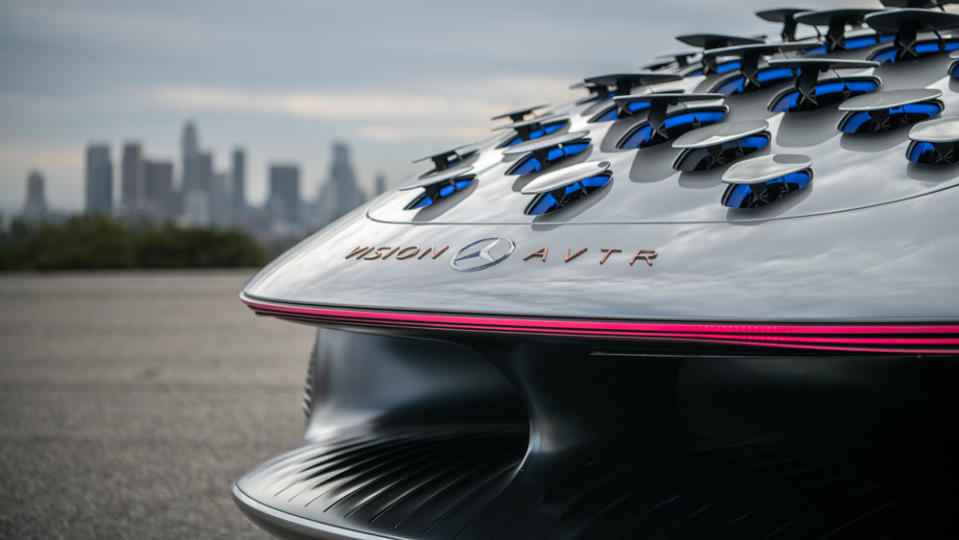
Scattered across the rear deck are 33 “bionic flaps” which move right, left, up and down. Though the show car is designed to have their movement patterns operated via an iPad, they were also imagined as a potential way to scoop air into the car for cooling, act as an air brake or serve as solar panels.
AVTR’s wheels are indeed one of the concept’s most unique features, displacing massive wheel wells with balloon-like fullness. Because each operates independently, the car can “crab”—move sideways— at approximately 30 degrees. Walk up to the car and the clear, ovoid doors open in butterfly form, welcoming you into the spacious cabin. The suspended seat design recalls the hammocks from the first Avatar film, and the reclined seating position is centered, quite literally, around a multifunction control element that fits in the palm of the hand.
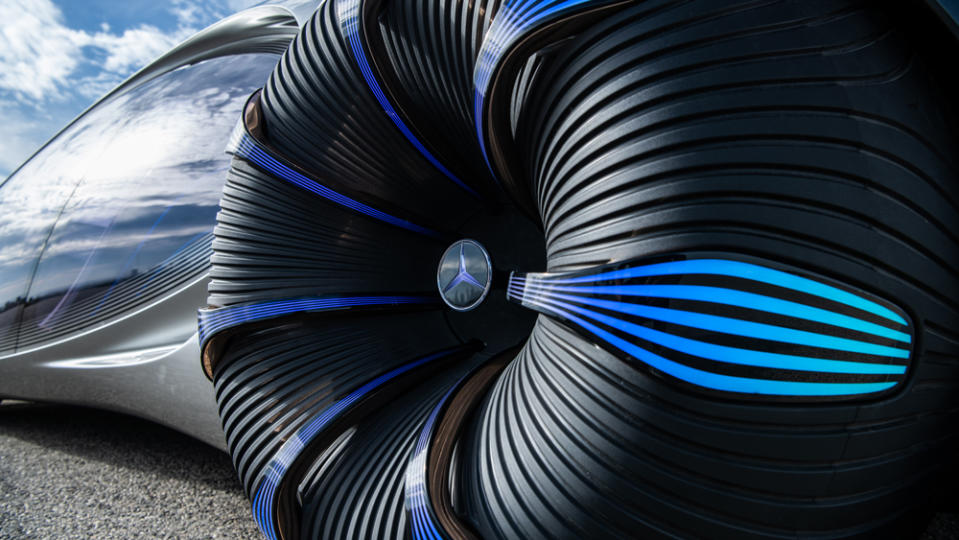
Nestling into the Vision AVTR feels more like a leisurely respite in a futuristic lounge; the seating position is so laidback it’s a tad disconcerting. There’s also the unexpectedly enclosed positioning of the a-pillars, and the pulsing lights that feel like you’re seated within a living organism, not to mention the curved display module which depicts images of different worlds across the dashboard-like surface.
Between the two passengers, the cabin’s extreme minimalism is boiled down to the control module, which rises from the center console and feels somewhat like a rubberized ziggurat. Slide it forward in the palm of your hand, and the vehicle rolls ahead; twist it at an angle, and the whole car turns sideways as though in a slow-motion slide. There’s an extremely unsettled feeling that comes with piloting the AVTR because it feels completely alien to how any other four-wheeled vehicle operates.
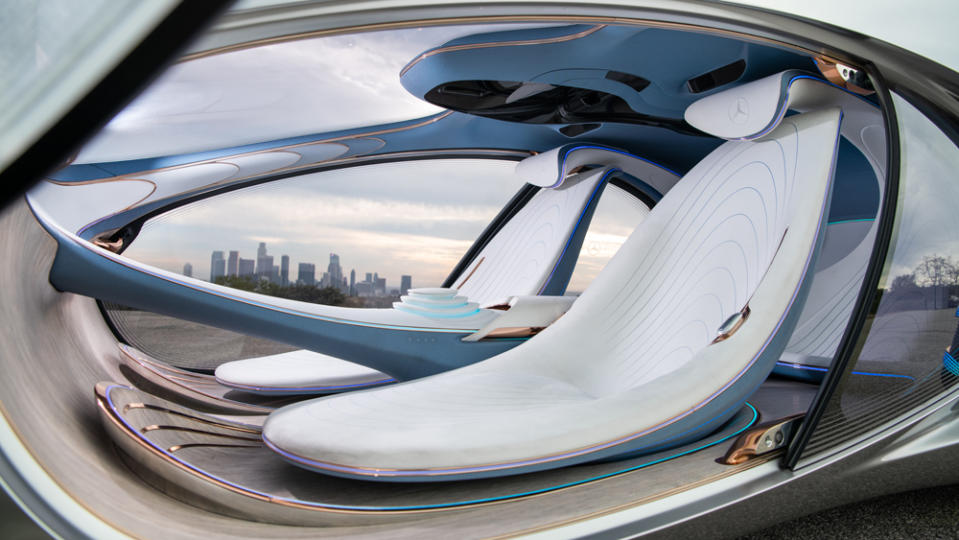
Personally, I was thankful that it had a top speed of only around 30 mph, because I wouldn’t want to risk driving this priceless one-off any faster, even though we were in the controlled environment of the Lightstorm Entertainment back lot in Manhattan Beach, Calif. Moving under its own electric power through four giant tires, the Vision AVTR feels low slung and deliberate, yet capable of yawing into corners at will and operating outside of the dynamics of conventional vehicles. Again, the sensation is about as foreign and unique as one would expect it to be; and when I pulled it back into the safety of the studio and parked it, I could not be more relieved.
At the end of the day, Mercedes-Benz’s venture with the film world provides a fascinating insight into grand-scale experiments. Avatar: The Way of Water, which is in theaters now, reportedly cost between $350 million and $400 million to produce—pocket change when you consider that the original Avatar raked in more than $2.92 billion in box office to become the top performing movie of all time.
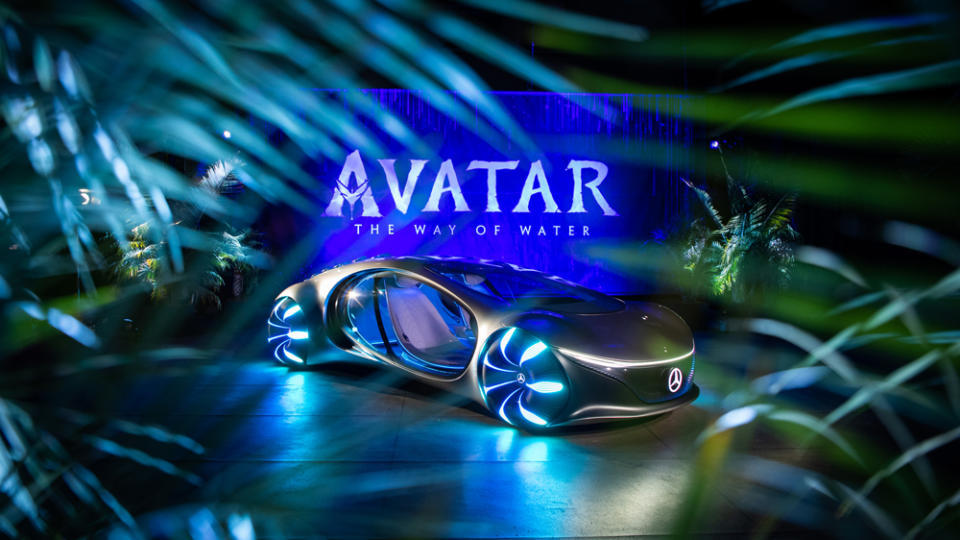
The Mercedes-Benz Vision AVTR concept, which required around 50 (and at times up to 200) engineers, designers and craftspeople to build, offers a rare vehicular representation of the ultra-successful Avatar film franchise. Mercedes-Benz won’t disclose what it cost to make the one-of-a-kind concept but, suffice to say, building an evocation of the future in physical form feels worth every penny.
Click here for more photos of the Mercedes-Benz Vision AVTR concept car.
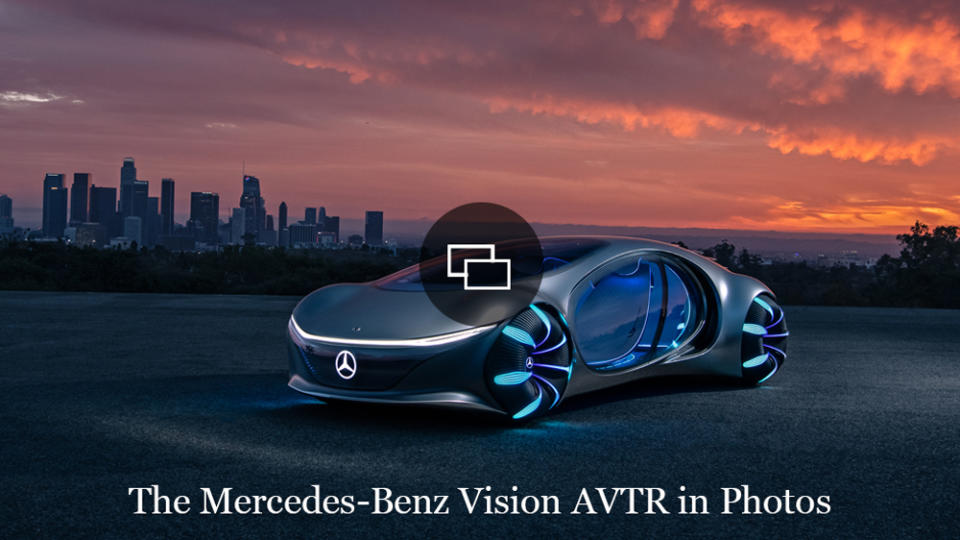
Best of Robb Report
The 15 Best Travel Trailers for Camping and Road-Tripping Adventures
The Chevy C8 Corvette: Everything We Know About the Powerful Mid-Engine Beast
Sign up for Robb Report's Newsletter. For the latest news, follow us on Facebook, Twitter, and Instagram.

